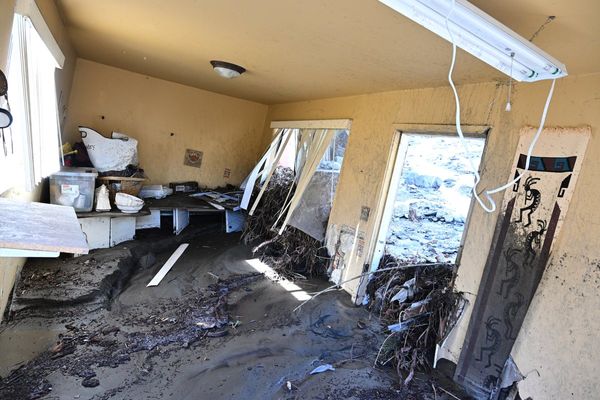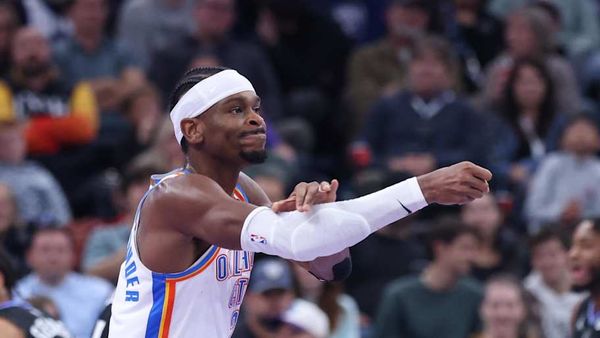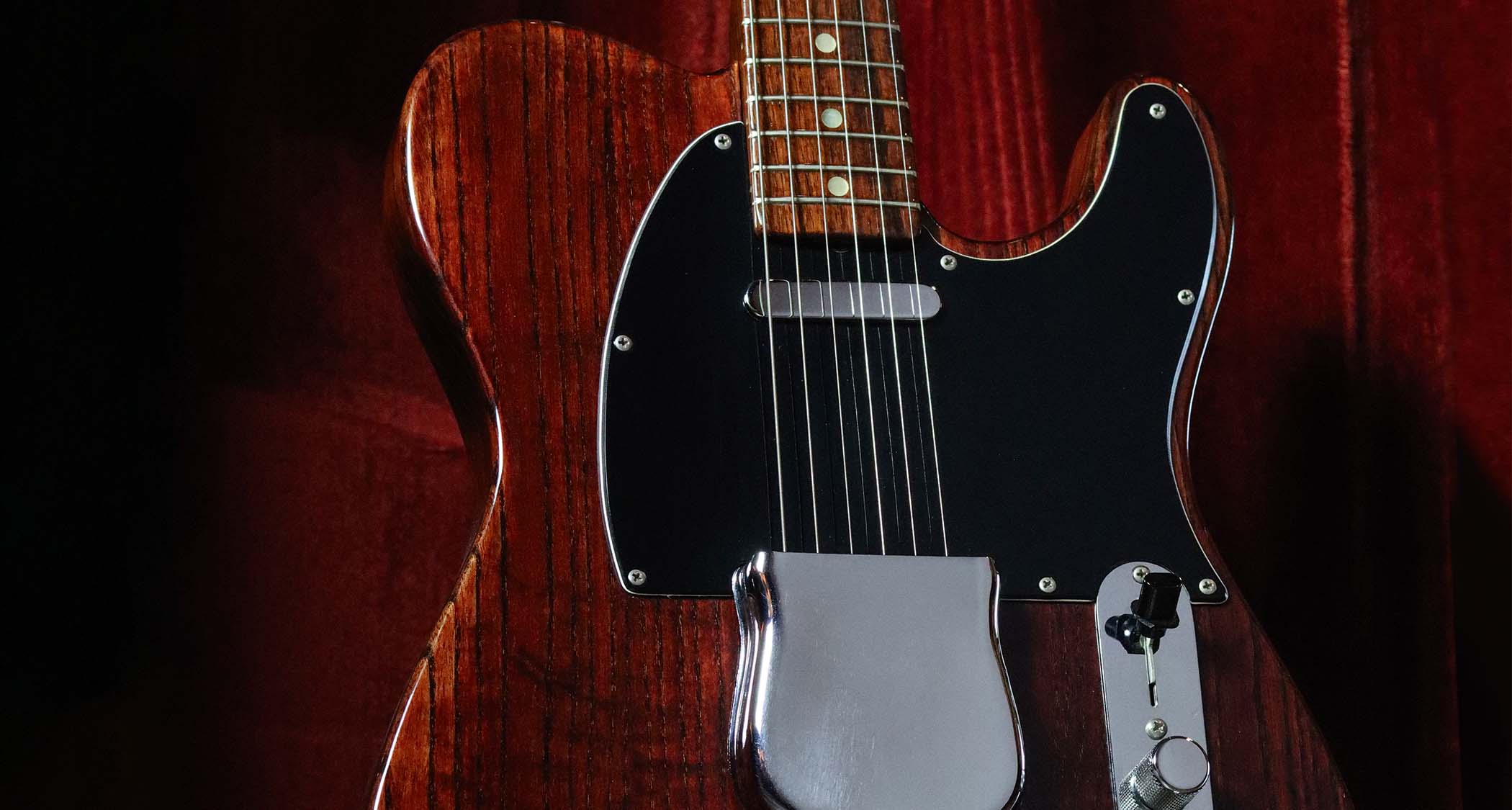
“Philip Kubicki was Roger Rossmeisl’s apprentice at Fender R&D and he was behind several guitars that became iconic. Roger was more involved in Fender’s archtops and also the Thinline Telecaster, but Philip was the person who built George Harrison’s rosewood Tele and the rosewood Strat for Hendrix.
“He was also responsible for the pink Paisley and blue floral Teles. Fender didn’t keep particularly good records, but it’s estimated around 75 of each were made.
“These models were incredible creations from such an interesting time in guitar-making history. The analogy I’d use is that in the US in the 1960s, horsepower in cars was a really big deal, but the government was already stepping in with emissions regulations. After 1970, the horsepower started to decrease so they started putting stripes on cars to make them look faster.
“I think Fender had arrived at a similar point because of sales since the mid-60s and they were trying new things to attract attention. In order to help sell their regular Telecasters, they made these interesting editions to take to trade shows.
“Some, like the ghost Tele, never went any further, but at some point someone gave the go ahead for the Paisley, Floral and Rosewood models to be put into production.”
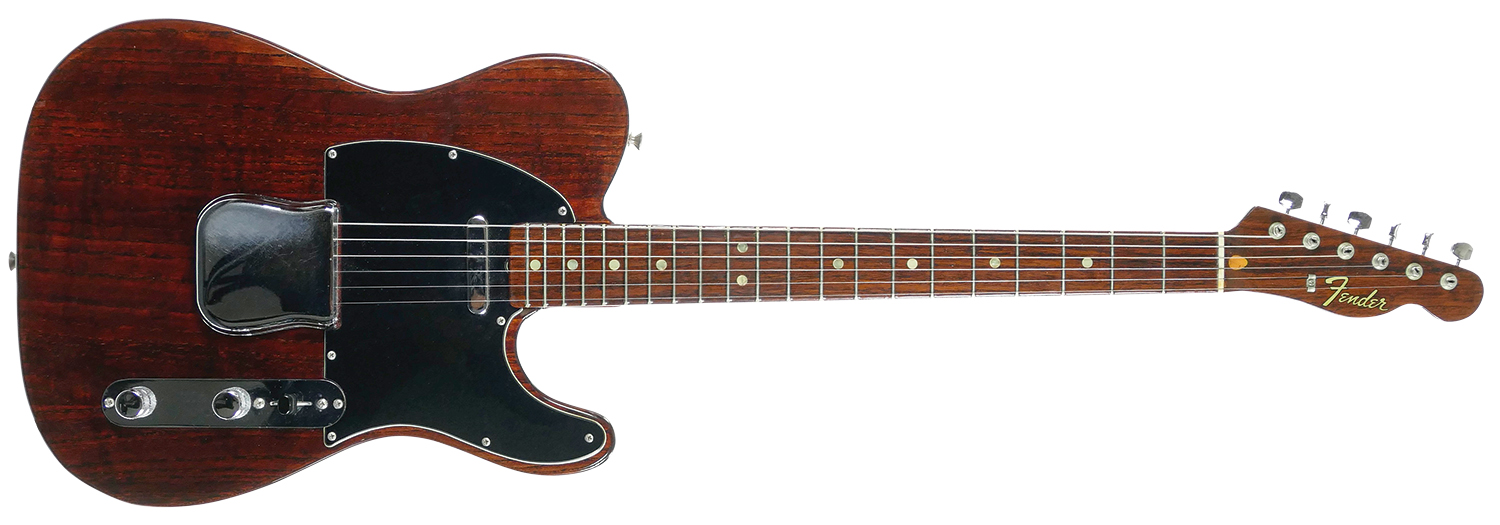
“Philip wasn’t happy with the weight of the early rosewood guitars and by 1969 rosewood Telecasters were weight-reduced, with the construction of a Thinline minus the f-hole. Bill Carson, who was a key figure at Fender, obviously agreed with Philip and in 1968 he had Fender R&D build him the guitar we’re featuring in this issue.
“This is a 1968 Fender Telecaster with a rosewood neck and a solid ash body that was stained to look like rosewood. I have a cool picture of Bill holding it and a letter providing all the details and background on the guitar. Bill’s letter goes on to say that he had seen the rosewood Telecasters but felt they were too heavy for him.”
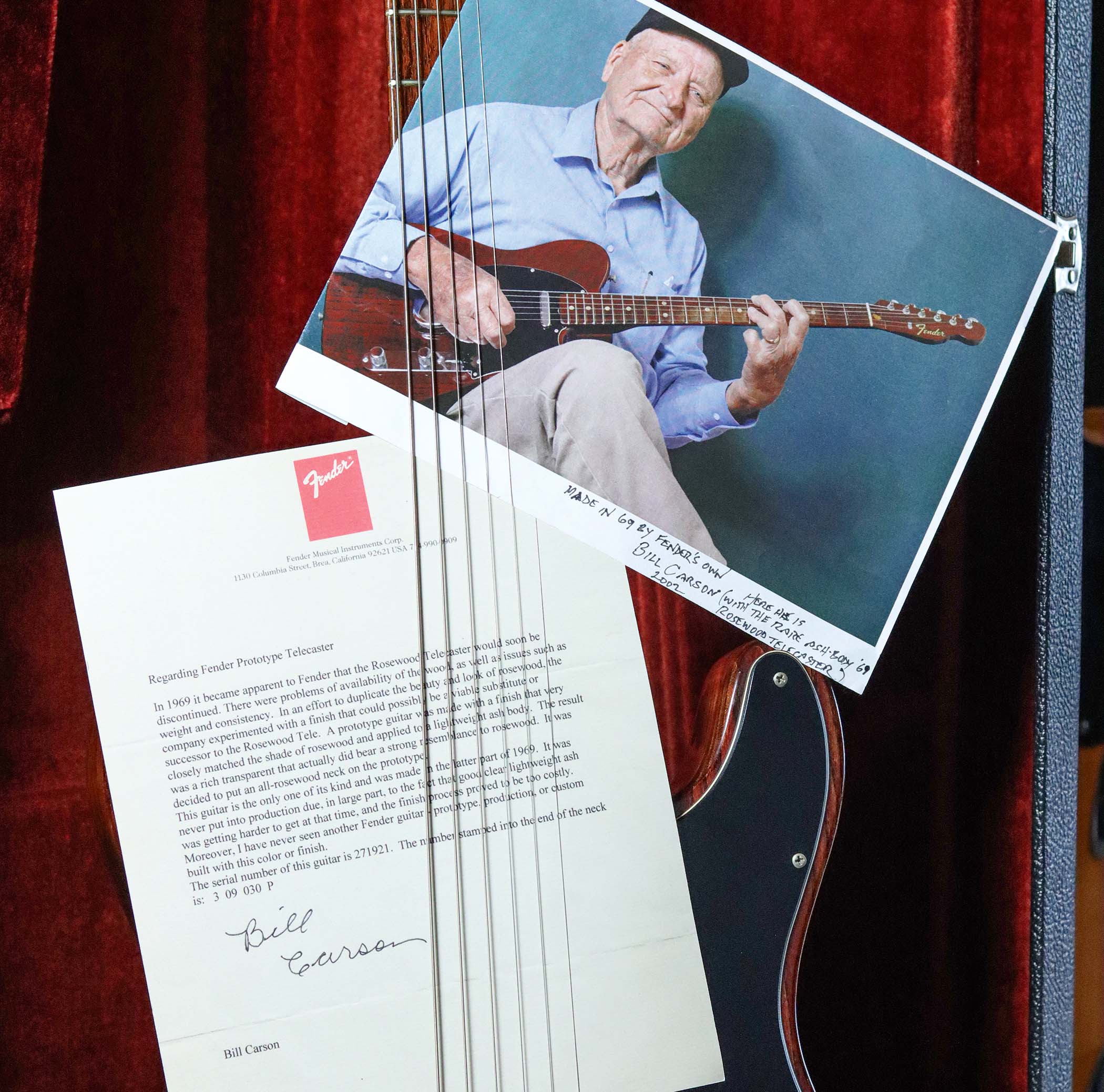
“It’s definitely one of a kind, and if I didn’t tell you, you probably wouldn’t know that the body isn’t rosewood. You would have to study it closely and the biggest difference is actually the weight. Solid rosewood Teles tend to come in at around 11lb to 12lb, but this guitar is closer to 7lb. You might expect it to be neck heavy, but it’s very well balanced.
“Another problem with rosewood is that it’s so oily, which makes it hard to apply a polyurethane finish. They literally had to sweat the oil out using steam, wipe it down with alcohol and repeat the process several times. It probably wasn’t very cost effective and that may explain why they didn’t make more of them. They also cost $100 more than a regular Telecaster and that was a lot of money at the time.”
“The rosewood necks are interesting because they were made like the 1950s maple necks. They have a one-piece construction with no fretboard cap, and because Fender used maple for the skunk stripe and plug, they’re a bit like a photographic negative.
“Tele pickups made from 1966 onwards tend to be far more microphonic because they started potting them in lacquer, rather than wax. It makes them lean towards a brighter and tinnier sound, and they’re prone to squealing. A lot of country players actually gravitated towards that quacky kind of sound and everybody preferred the more modern-style wiring.
“The rosewood Teles never achieved any great popularity when they were new. With the exception of George Harrison, I don’t recall any name players bringing one out on stage until vintage guitars became cool. Most players don’t favour them – they’re a bit muddy and odd sounding. They’re not bad guitars, but they sound very different from classic Teles.”
“I bought this guitar about 18 years ago after being contacted by someone I knew on the West Coast who had access to a number of guitars that had been in Fender’s museum collection. After the museum closed, the guitar stayed around that area in a private collection.
“The condition is virtually new, so I don’t think Bill Carson played it that much. In contrast, I’ve had a couple of George Fullerton’s guitars and I could tell he smacked his guitars around and played them. But I think the body colour and the rosewood neck with the black pickguard make this one badass-looking Tele.”
- Vintage guitar veteran David Davidson owns Well Strung Guitars in Farmingdale, New York: info@wellstrungguitars.com / 001 (516) 221-0563

